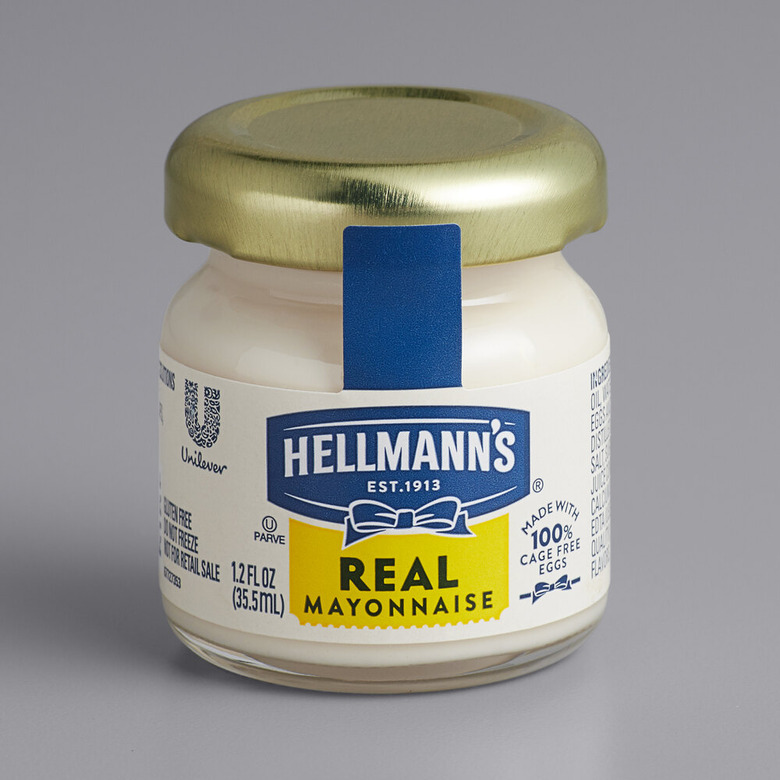Does Mayo Actually Need To Be Refrigerated? We Asked The Experts
From leaving butter at room temperature to making sure eggs are refrigerated in America, we've been learning a lot about food storage. During this process, we've been thinking about one specific food: mayonnaise. Why is it that mayo is left, room-temp, on a shelf at the grocery store, yet you have to refrigerate it after opening? Should we be storing it differently at home?
To find solutions to all our unanswered mayo questions, we reached out to the experts.
"Many shelf-stable foods, like mayonnaise, are packaged in sterile, airtight containers and individual ingredients like eggs are pasteurized to eliminate any potentially harmful bacteria," Amy C. Keating, a registered dietitian, nutritionist, and the program leader at Consumer Reports, tells Hunker. "Once opened, it is recommended that mayonnaise be refrigerated to maintain quality."
Isabel Maples, a nutritionist and registered dietitian with the Academy of Nutrition and Dietetics, adds that since mayonnaise is acidic (thanks to lemon or vinegar), it doesn't foster bacterial growth as easily. That is, when it's kept in an airtight container. "Commercial mayo does turn a funky brownish color if left out and not refrigerated, once it is opened," she says.
But, how does refrigeration help the opened mayo stay fresh? "Cold temperatures help food stay fresh longer because colder temperatures slow down bacterial growth," April Rivas, a certified food safety instructor and the owner of ATC Food Safety, tells Hunker. "Refrigeration slows down the spoilage of the food products, helping to preserve the life of foods."
In other words, when mayonnaise is in an airtight jar, it can take care of itself. But once that jar is opened, all bets are off. So you're going to want to keep your mayo refrigerated (because no one wants to see that condiment turn brown).
